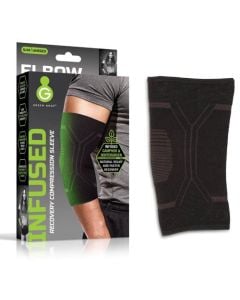Common Questions About Compression Hosiery
What is compression hosiery?
Who should use compression hosiery?
How long will the compression garment last?
What is an embolism?
How should I wash or launder my compression hosiery?
What type of compression garment should I get?
What size compression garment should I get?
What are gradient compression garments?
What if I only want to wear the sock on one leg?
Do your compression garments contain any Latex?
Who should not use compression hosiery?
What is compression hosiery?
Compression hosiery are products that help promote blood circulation in the legs. The garments compress the legs, which helps support vein walls. Vitality Medical is proud to offer compression hosiery from Jobst, Kendall, and Curamedica.
Who should use compression hosiery?
A physician is the best person to decide whether or not you need compression socks. He or she will generally recommend is for persons who have:
- Swelling in the legs
- Tired, aching legs
- Varicose veins
- Venous insufficiency
- DVT (Deep Vein Thrombosis)
- Venous ulcers
- Lymphedema
How long will the compression garment last?
Compression garments typically last 3-6 months. The garments tend to lose elasticity and become less effective as time goes on. Therefore, if the garments can be put on easily, then they should probably be replaced. You can extend the life of your garments by following the manufacturer's guidelines for washing and laundering.
What is an embolism?
An embolism is a blood vessel obstruction caused by a blood clot. Compression Therapy Garments discourage these obstructions from forming.
How should I wash or launder my compression hosiery?
Follow the manufacturer's guidelines. Typically, they will recommend hand-washing with a delicate fabric detergent or special solution and line-drying the hosiery.
What type of compression garment should I get?
Your doctor will know what type of compression is best for you. Compression is measured in mmHg, a common medical measurement. Your physician will probably recommend:
- 14-17 mmHg: This pressure range is considered "mild" and is generally recommended for varicose veins and mild edema.
- 18-24 mmHg: This pressure range is considered "moderate" and is generally recommended for severe varicose veins, mild edema, and the prevention of ulcer reoccurence.
- 25-35 mmHg: This pressure range is considered "Severe" and is generally recommended for post-phlebitic limb and chronic venous insufficiency, although it may be used in cases of severe varicose veins and the prevention of ulcer reoccurence.
What size of compression garment should I get?
Please refer to our sizing guide.
What are gradient compression garments?
Gradient compression garments have higher pressure at the ankle which gradually decreases as the garment goes higher up the leg.
What if I only want to wear the sock on one leg?
For aesthetic purposes, you may be able to put a lower compression of the same style and color on the unaffected leg. Check with your physician to make sure that the problem is in only one leg and that a low-compression sock would work for the unaffected leg.
Do your compression garments contain any Latex?
The following Vitality Medical compression garments contain Latex:
- Mediven Support Stockings
- Jobst Men's Dress Socks
Who should not use compression hosiery?
Compression hosiery is not for everyone. Always consult a physician before starting vascular therapy. People with the following conditions should not use compression garments:
- Skin lesions
- Gangerene
- Vein ligation
- Isachemic vascular disease
Sources
World Wide Wounds - Compression Hosiery in the Prevention and Treatment of Venous Leg Ulcers
Medical Library Association - Medspeak Terms - MLANet
Helpful Articles
Vein Forum - American Venous Forum
eMedicine - Chronic Venous Insufficiency
MacMillian - Support Using Compression Garments
MedicineNet - Varicose Veins & Spider Veins









Login and Registration Form